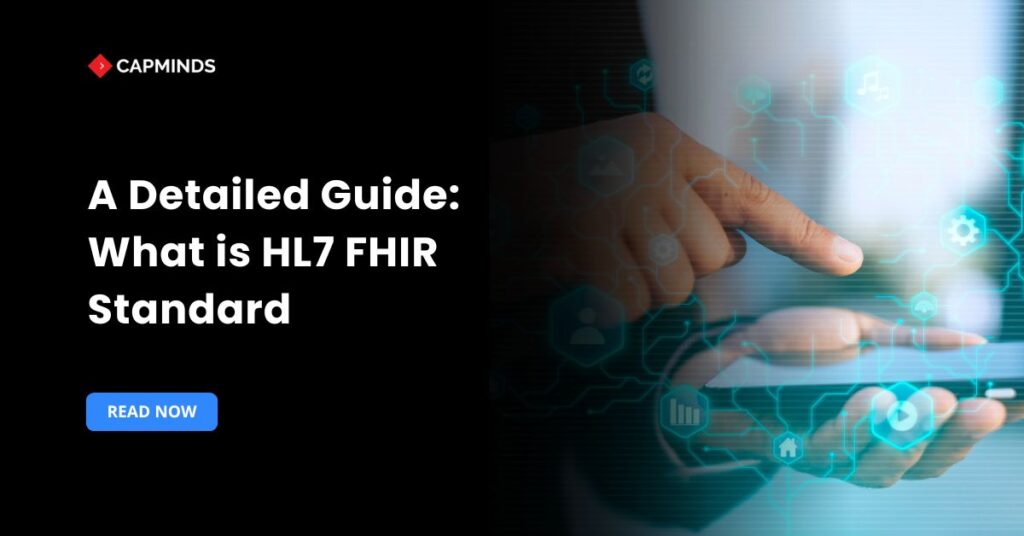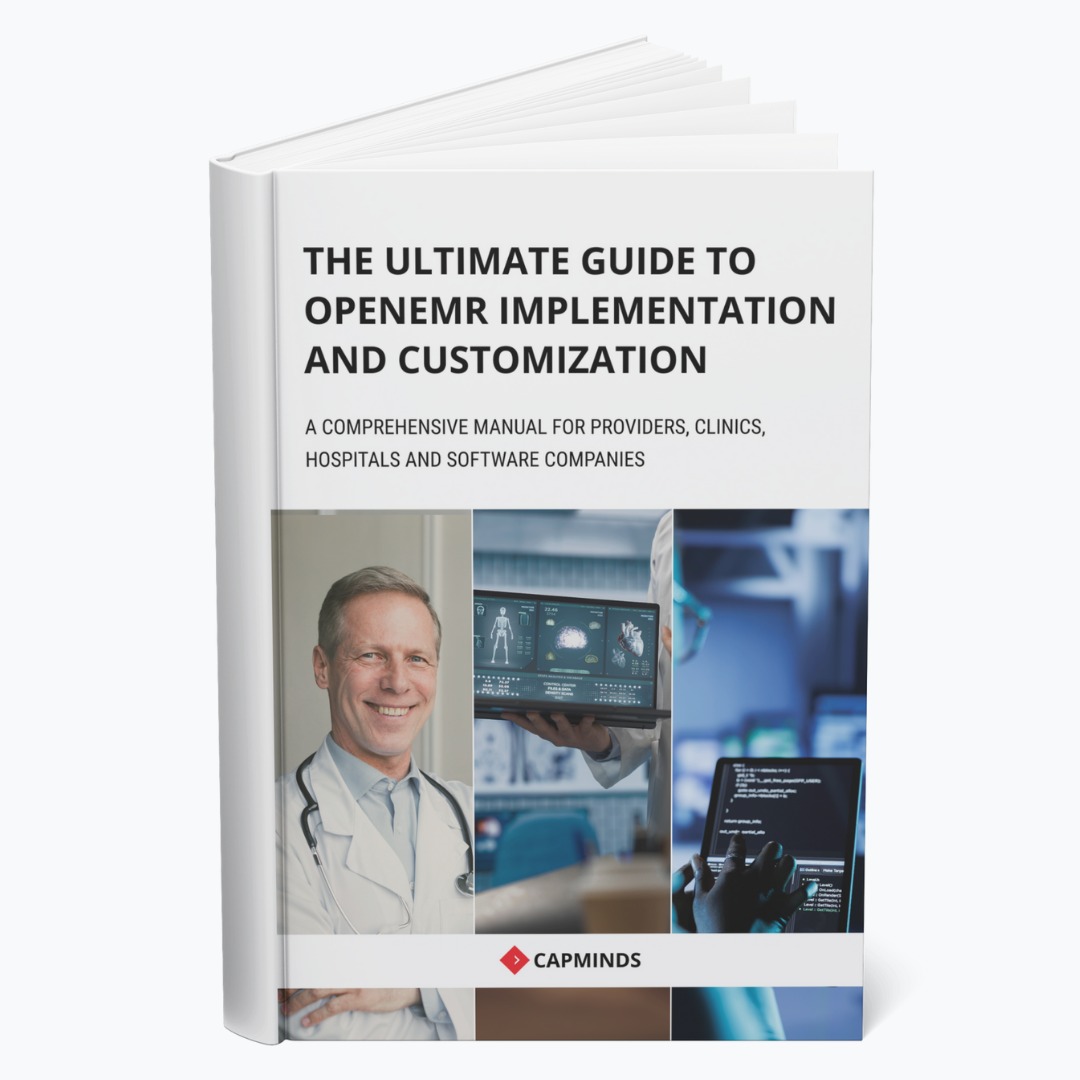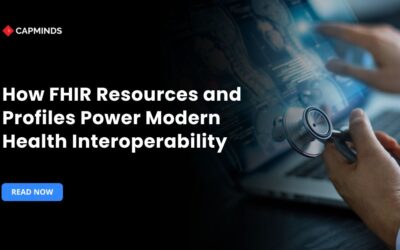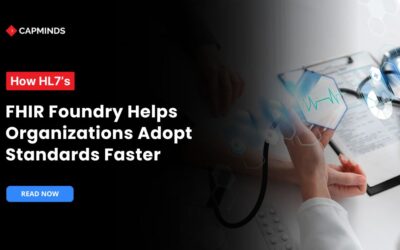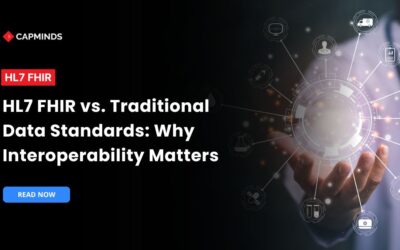What is HL7 FHIR Standard – A Detailed Guide
Interoperability is key to efficient healthcare, allowing systems to exchange patient data seamlessly. To support this, HL7 (Health Level Seven International) developed the FHIR (Fast Healthcare Interoperability Resources) standard to improve the speed and consistency of health data sharing.
Here, you’ll know about the HL7 FHIR key features, advantages, challenges in implementation, and the upcoming trends defining the future of healthcare interoperability.
What is HL7 FHIR
HL7 FHIR was introduced in 2014 by Health Level Seven International as a healthcare data exchange standard. HL7 FHIR is the best of what came before and incorporates modern web technology like REST, JSON, and XML. FHIR was designed with the modern healthcare age in mind, keeping things simple to allow it to be flexible and accessible.
- FHIR is flexible and easily integrates with the EHR system.
- It is built using familiar web technologies like REST, JSON, and XML.
- It’s a lightweight structure, faster to implement in your practice.
- Standardized formats and APIs support seamless data exchange.
Unlike previous standards such as HL7 v2 or CDA, FHIR enables real-time data exchange for today’s healthcare.
Key Features of HL7 FHIR
1. Resource-Based Architecture
The core building blocks of FHIR are called resources, which represent data. Resources are modular, reusable, and can be combined or extended to support complex use cases. Standard resources reduce variability in healthcare data exchange.
2. Standard Web Technologies
FHIR is built with a RESTful API using standard web protocols like HTTP, HTTPS to enable real-time communication.
Data are represented in the following formats:
- JSON – Lightweight and easy to analyze, which makes it popular in web and mobile development.
- XML – Suitable for legacy healthcare system integration that has structured, document-based formats.
- RDF – It can be used in the semantic web and linked data use cases.
3. RESTful Interactions
HL7 FHIR supports standard CRUD operations.
- Create new patient data records.
- Read existing data, such as the patient’s medical history.
- Update the existing data, like modifying the patient contact number.
- Deleting or removing data from the patient record.
4. Interoperability
FHIR is built to work in different systems to share data easily. It follows global regulatory initiatives like the Cures Act in the U.S and European Health Data Space in the EU, promoting better data accessibility.
5. Security-Ready
It supports OAuth 2.0, OpenID Connect, and TLS for authentic and secure authorization. Provides the building block for SMART on FHIR, which supports the integration of EHR apps based on stringent security measures.
6. Mobile and Cloud-Friendly
FHIR is best suited for mobile health applications, IoT devices, and cloud platforms. It supports real-time data sharing for contemporary healthcare. It supports integration with wearable devices and RPM. This is useful for both healthcare providers and patients.
7. Implementation Guide
HL7 offers thorough Implementation Guides to encourage consistent implementation. FHIR is further supplemented by numerous test tools (e.g., Inferno, Touchstone) for testing implementations.
Related: 5 Critical HL7 Messages Every HMS Must Handle for Efficient Healthcare Operations
Benefits of HL7 FHIR
1. Enhanced Interoperability
FHIR allows seamless data exchange between different systems, reducing data gaps. It enables healthcare to communicate efficiently and leads to better care coordination.
2. Ease of Implementation
FHIR stands out for its ease of implementation, thanks to its well-defined, modular resources. It simplifies the once-complex integration between healthcare systems. Compared to legacy systems, FHIR is cost-effective, flexible, and supports seamless data sharing. This empowers providers of all sizes to deliver efficient and high-quality patient care.
3. Security and Data Privacy
FHIR supports strong security protocols like OAuth 2.0 and OpenID Connect. It equips healthcare entities with secure authentication and authorization processes, ensuring that patient information is protected. This not only assures healthcare organizations but also builds patients’ trust that their data is secure.
4. Data Management
FHIR is a valuable method for handling healthcare data, offering a standardized framework that facilitates the sharing and examination of patient information among various systems. Utilizing web standards and APIs, it allows smooth integration with contemporary technologies, improving data management and security.
Challenges in Implementing FHIR
1. Interoperability Constraints
Differences occur in implementation among various vendors. Inconsistent support for FHIR resources can affect the process. It is typically hard to translate historical data from legacy systems to FHIR format.
2. Scalability & Performance
When high volumes of health data make real-time response and performance difficult. FHIR APIs can be resource-intensive if not optimized.
3. Vendor Acceptance & Compliance
Variation occurs in adoption by EHR vendors and healthcare providers. Proprietary extensions can lead to solutions that are not interoperable in practice.
4. Implementation Costs
Development, integration, and training could be expensive. Smaller practices and providers may lack the financial funds or technical resources.
5. Terminology Challenges
Depending on standardized terminologies like SNOMED CT, LOINC, and ICD-10. Inconsistent code usage results in semantic interoperability problems.
Related: HL7 to FHIR Conversion: Complexities in Automating Health Data Convert
Future trends in HL7 FHIR
1. AI Technology
AI/LLM requires structured data in a machine-readable format. Large Language Models and AI systems require high-quality input data to deliver accuracy and insights. Developers can easily access and train models for clinical decision support and diagnostics.
2. FHIR in IoT & Wearables
Integrating FHIR with personal health devices such as fitness trackers, glucose monitors, and monitoring systems. Sending real-time data to FHIR servers.
3. Blockchain Technology
Blockchain helps healthcare organizations ensure that patient data is secure and safe. A decentralized identity provides patients with more control over who can access their health information.
4. Low-Code Platforms for FHIR
Organizations are adopting low-code or no-code platforms built on FHIR APIs. This helps users to test, create, and deploy healthcare applications. This will be useful for small practices, providers, and research institutions that may lack resources.
CapMinds HL7 FHIR Service for Healthcare Practice
CapMinds offers the best all-in-one health interoperability solution for healthcare practices. Our HL7 FHIR service will understand your clinical needs and requirements to cater to our solution.
We have years of experience in this field, faced many challenges, and tackled them with ease.
Why can CapMinds be your Go-to Interoperability Solution?
- We are experienced professionals with years of experience in the field.
- Our technical team is an expert that will analyze your healthcare practice thoroughly to tailor the Interoperability solution.
- We prioritize safety, security, encryption, and authentication to protect your healthcare practice’s patients’ data.
- Our comprehensive solution ensures seamless interoperability, adhering to industry standards and using standard protocols.
- We offer comprehensive training sessions to healthcare staff.
- Our affordable health interoperability solution benefits healthcare practices at all levels.
If you are searching for the best interoperability service for your practice, CapMinds is your choice. We can assist you by navigating all potential challenges and ensuring seamless health data exchange.
Reach out to CapMinds Health Data Exchange Solutions for your Healthcare Practice.
